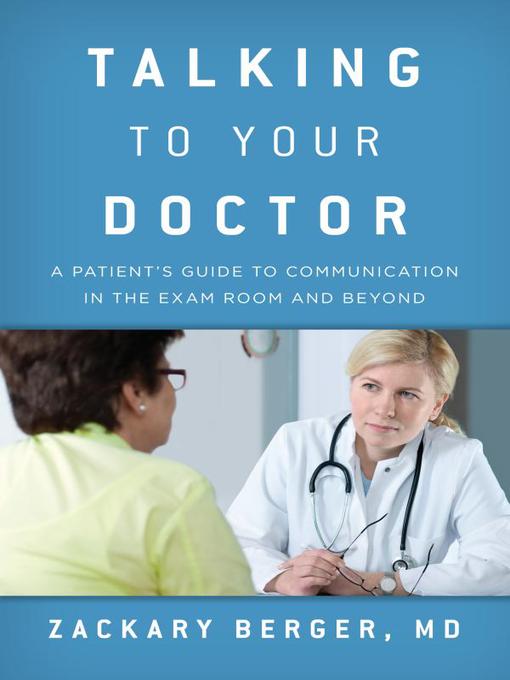Talking to Your Doctor
A Patient's Guide to Communication in the Exam Room and Beyond
In Talking to Your Doctor, readers will learn to:
•Talk to your doctor—and get your doctor to talk to you
• Remake the relationship with your doctor, and our health care system, on the basis of good communication
•Make sure your visit with the doctor is productive and meets your needs
•Help yourself and others avoid over-testing and over-treatment
Starting with the conversation can redress imbalances and put the relationship of doctor and patient, and eventually the entire health care system, back on a healthy footing. Using illuminating model dialogues, real transcripts from the clinic and hospital, resources for communication improvement, and a brief history of doctor-patient communication, the author helps readers develop strategies for obtaining better care from their doctors, from the minute they step into the exam room.
-
Creators
-
Publisher
-
Release date
August 1, 2013 -
Formats
-
Kindle Book
-
OverDrive Read
- ISBN: 9781442220515
-
EPUB ebook
- ISBN: 9781442220515
- File size: 373 KB
-
-
Languages
- English
-
Reviews
-
Booklist
August 1, 2013
What is the most commonly performed procedure done by a doctor? The answer is surprisingly simple: interviewing patients. The medical interview has four major purposes: building rapport, collecting information, educating, and proposing possible treatments. Berger, an internal-medicine specialist at the Johns Hopkins Hospital, dissects the dynamics and studies the flow of doctor-patient encounters. He offers suggestions for effectively communicating with your doctor (even when you are nervous, embarrassed, and intimidated). Some of the most frequent emotions surfacing during a doctor's visit are fear, anger, sadness, and frustration. Yet good physicians can help patients plot a course through difficult times by expressing empathy and exercising emotional nimbleness. Berger writes, Healing depends on sensitive emotional navigation as much as objective truth. Every visit to the doctor's office is an opportunity for a new beginning and an important dialogue about remaining healthy or feeling better. Patients should feel comfortable about expressing their concerns, and physicians need to listen carefully. Berger's book lays a strong foundation for constructing solid relationships between patients and their physicians.(Reprinted with permission of Booklist, copyright 2013, American Library Association.)
-
Loading
Why is availability limited?
×Availability can change throughout the month based on the library's budget. You can still place a hold on the title, and your hold will be automatically filled as soon as the title is available again.
The Kindle Book format for this title is not supported on:
×Read-along ebook
×The OverDrive Read format of this ebook has professional narration that plays while you read in your browser. Learn more here.

